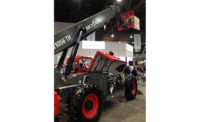
As a January deadline to clean up off-road diesel emissions approaches in the U.S., prices are expected to rise in 2014 to pay for the new technology. However, better fuel economy will help offset the up-front cost.
"We've looked in every nook and cranny, trying to save fuel," said Bill Campbell, product application specialist for Caterpillar Inc. this month at its facility in Edwards, Ill. There, the company unveiled a new line of 2014 machines that meet U.S. Tier-4 Final regulations, which call for off-road diesel machines to emit near-zero levels of smog-forming nitrogen oxides (NOx).
Cat in September announced a price increase of up to 2% worldwide starting in January, along with an "emissions-related" increase of 2% to 6%. As such, machine sales may get a quick lift in the fourth quarter, followed by a softer-than-usual first quarter next year.
"The Tier-4 Final prices will cause some people to make some purchases of Tier-4 Interim machines because they are cheaper and less complicated," explained Frank Manfredi, an equipment analyst in Mundelein, Ill. Manfredi predicted overall U.S. machinery sales in 2013 to hit just over 174,000 units, a 5.7% jump over 2012, followed by 186,000 units in 2014, up 6.9%.
Cat said it also is developing retrofit kits that allow late-model used machines to work in global markets with dirty fuel. Prices were not disclosed, but Cat confirmed that, once a machine is retrofitted, it cannot be imported back into the U.S.
Long term, technologies, such as continuously variable transmissions [see CVT wheel loaders in this ENR Products Snapshot] and NOx aftertreatment, are improving operating costs. Cat has targeted an 8% hike in fuel economy, or a 5% net gain in "fluid economy," for machines using urea to cut NOx. But users should factor in new maintenance costs: Cat recommended filling up on urea at each fuel fill—typically, at the start of each shift.


Post a comment to this article
Report Abusive Comment